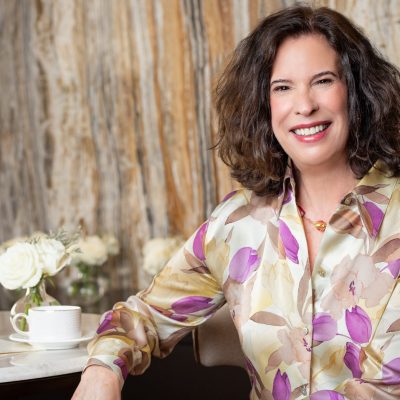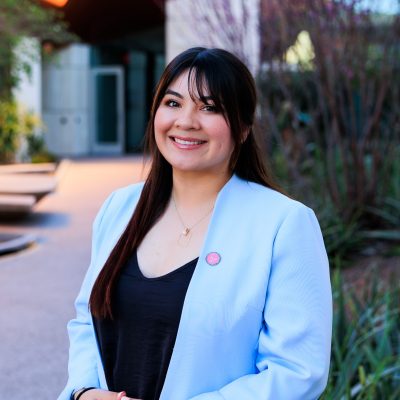Indochina our way
The sun was high as our driver made his way through the rough underbrush of a bamboo forest in Cambodia to the top of the mountain for a picnic lunch. We were taking a trip off the beaten path through Laos, Cambodia and Vietnam.
I expected him to set up a little table and pull out the picnic basket as we have experienced so many places in the world. You can imagine my surprise when the first thing I saw was a chef in full regalia awaiting our arrival. As we left our Land Rover, he and a waiter greeted us with champagne. Our table, decorated with colorful orchids, was set with white linens, crystal and china.
Lunch, with accompanying wine pairings, was spectacular – shrimp cocktail and a choice of rack of lamb or sea bass – all prepared on the spot as we relaxed with our champagne.
We were spending the day with Didier Faraud, director of the Heritage Suites Hotel. A French expatriate, Didier is a long-time resident of Siem Reap. “I found this particular site many years ago while hiking through the forest,” he told us. “This is definitely a private place. I’ve asked around and haven’t found anyone who is aware of its existence, except for the old woman and her son who live in a hut near the clearing.”
THE BESPOKE EXPERIENCE
This site has huge overhanging boulders, some with Khmer carvings dating back to the 12th century. Below the carvings are small Buddhist altars, with recent incense and flower offerings indicating the old woman visited often.
We were enjoying the last days of a wonderful month-long journey through Indochina. The Cambodia portion of our trip was arranged by Remote Lands, a company specializing in bespoke experiences throughout Asia. Our activities were exactly as they promised – especially for us. From the spectacular lunch in the bamboo forest, to our visit to a tiny pagoda for a water blessing by an old monk, we rarely encountered other foreigners.
We went bicycle riding on the walls of Angkor Thom and had a freshly prepared private breakfast along the edge of the lake at Angkor Wat. We explored an unrestored 11th century temple about an hour’s drive from the city – a temple almost as large as Angkor Wat located in the middle of a deactivated mine field. We couldn’t even find a reference to it in the guidebooks. We enjoyed a relaxing afternoon on a beautiful wooden boat on Lake Tonle Sap and watched the spectacular sunset.
Remote Lands arranged for us to visit Angkor Wat with a French doctor of archaeology and expert on Buddhist temples. His insight into the history of the structures and the carvings and how they were expanded over the centuries was fascinating.
LAOS
Our journey began in Laos. When we arrived in Luang Prabang, I knew it was a “must go back to” place. The people are Buddhist, and their peaceful approach to life was evident both physically and spiritually. Our hotel, Orient Express’ La Residence Phou Vou, was so fabulous I hated to leave.
One morning the hotel chef sent us downtown with baskets of sticky rice so we could give alms to the monks. We lined up with the townspeople along the sidewalk, standing barefoot on a bamboo mat. Hundreds of monks, dressed in their bright orange robes, left their pagodas and marched single file down the main street, each carrying a basket. As they passed by, we took a handful of sticky rice from our basket and placed it in theirs until our baskets were empty.
Later that day, we visited an authentic H’Mong village, located in the mountains about an hour’s drive from Luang Prabang. The first thing we saw when we approached the village was a big new school under construction. We were amazed that what appeared to be a poor village would invest so heavily in education. We learned, however, that this village was actually very affluent; they just lived in their traditional ways.

We visited a few homes with our guide. People were friendly and children curious. The windowless houses were made from bamboo and wood and had dirt floors. The residents cooked over an open fire on the floor and slept behind small partitions in the corners. We had the good fortune to be there when the local Shaman was helping one of the residents who was ill. We watched through the doorway of the hut as the family chanted and the Shaman went into his trance to drive away the evil spirits.
VIETNAM
From Laos, we flew to Hanoi to begin our adventure in Vietnam. Despite its past, Vietnamese are friendly and love Americans. During the last 15 years, a growing market economy has emerged, and opportunities abound for people to own homes, entrepreneurs are encouraged to start businesses and foreign investment is welcome.
We visited the major cities, from the Chinese border to charming Hanoi, the ancient towns of Hue and Hoi An to the hustle and bustle of modern Saigon. Along the way, we visited rural villages, cruised on a junk in Halong Bay and met with local people in Hue and Hoi An.

Left, A splendid example of a Vietnamese pagoda
was discovered during a month-long journey into Indochina.
While many of Asia’s major tourist cities have erased their colonial history, Hanoi treasures its. Many of its old French colonial buildings are still standing alongside beautiful Vietnamese-style buildings and temples. Motorbikes still significantly outnumber cars, but that is changing.
The city of Hoi An is an exceptionally well-preserved example of a Southeast Asian trading port, dating from the 15th to the 19th century. In 1999, it was designated a World Heritage Site.
Saigon is a dynamic city, leading the way in Vietnam’s development. Shimmering skyscrapers tower over fruit markets and one-story residences. Communism may be the system, but capitalism is the passion.
The biggest “wow” of the trip was an overnight train and visit to Sapa, a small town of tribal people close to the border between Vietnam and China. These ethnic minorities originally migrated from China and formed hill tribes living throughout the region, making a living from farming and producing charcoal.
 On weekends, people from different tribes – the women in colorful traditional clothing – walk miles to bring their wares and livestock to market. Typical items included sugar cane, food items, cows, farm equipment, rubber shoes, household items, handicrafts and hand-embroidered fabric used for clothing. As I watched people interact with each other and make their purchases, it was hard to believe I was still in the modern world.
On weekends, people from different tribes – the women in colorful traditional clothing – walk miles to bring their wares and livestock to market. Typical items included sugar cane, food items, cows, farm equipment, rubber shoes, household items, handicrafts and hand-embroidered fabric used for clothing. As I watched people interact with each other and make their purchases, it was hard to believe I was still in the modern world.

A church in Sapa
As I think back on the wonderful experiences we enjoyed in Indochina, I move the destination back to the top of my “wish list,” for there are so many more things to do and see. As we visited the rural villages throughout Laos and Vietnam, one of the most amazing things was how prevalent modern technology was in the most unlikely places. From a tiny riverside village outside Luang Prabang to a floating fishing village in Halong Bay, we saw huts with generators, satellite dishes and televisions. Yet the people still maintain their traditional lifestyle and culture. It makes me wonder what the next generation will be like. Will the tradition continue?
Photo at top: Three monks visit the temples at Angkor Wat in Cambodia.
Story by Marion Hager
Photography by Carl Hager






